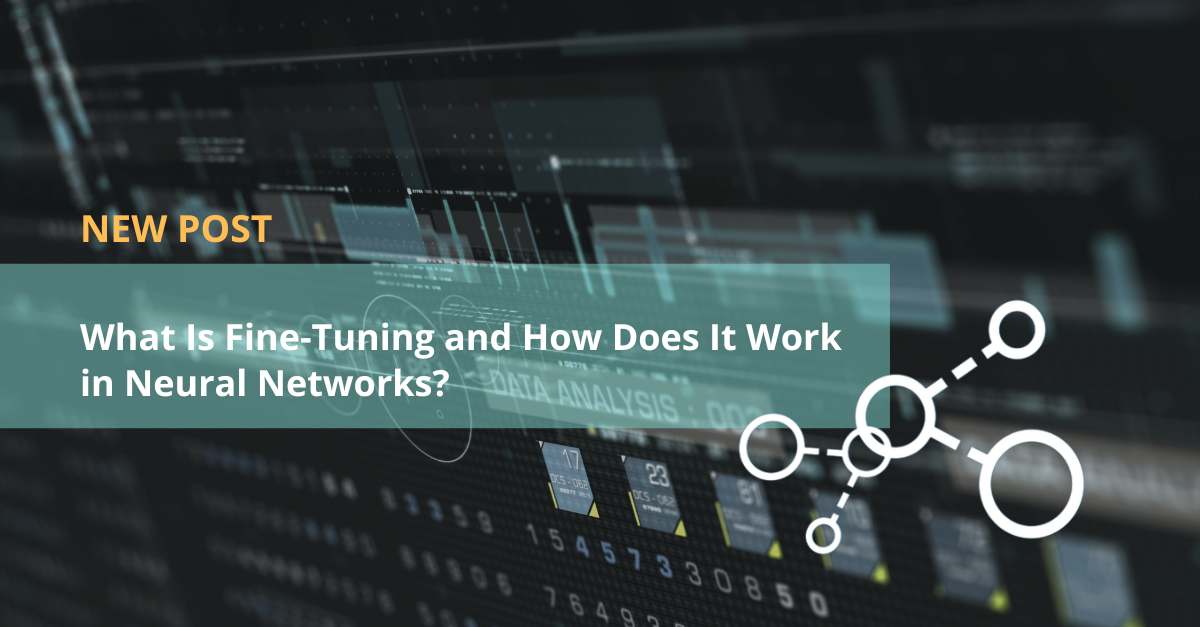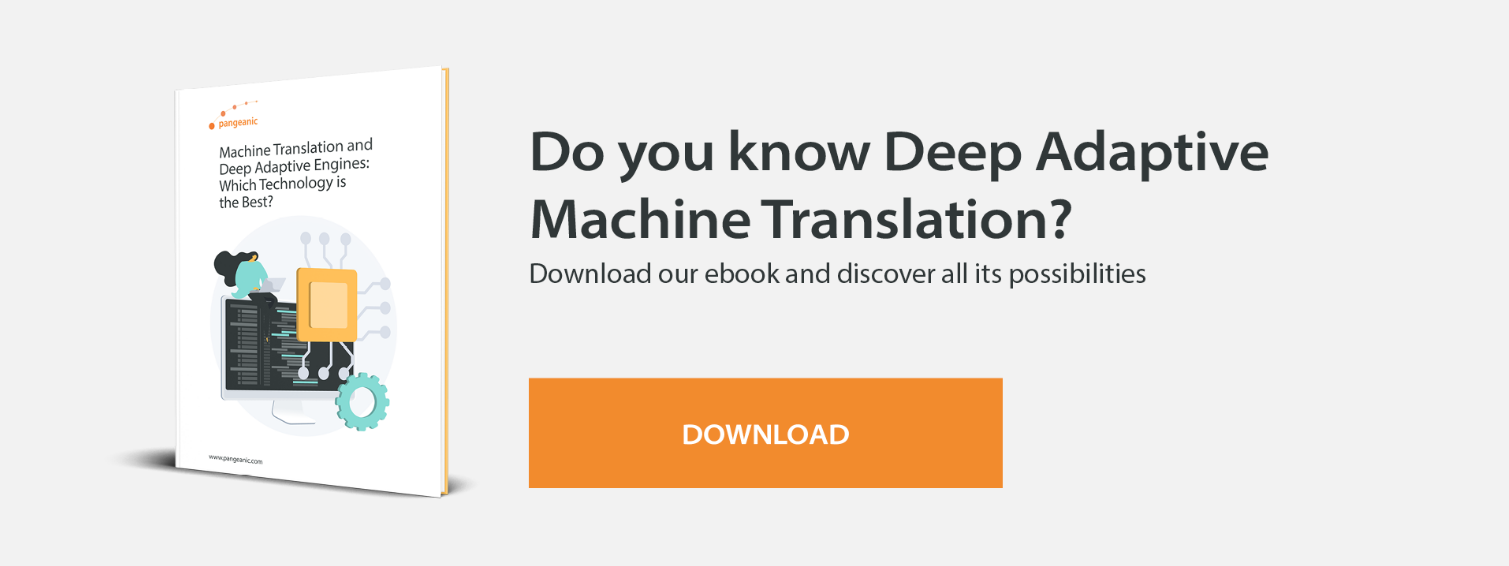
Developing, validating, and training a network from scratch can be an enormous task, in addition to requiring large data sets. This is why fine-tuning is so interesting.
Fine-tuning allows you to take a trained model that performs a certain task well and take advantage of all its knowledge to solve a new specific task; although, of course, following certain rules.
What is fine-tuning? why use it? and, how does it exactly work in neural networks?
These are some of the questions we will answer in this article.
What is fine-tuning?
Fine-tuning is a training technique that consists of the reuse of predefined and pre-trained CNN (convolutional neural network) architectures.
This is a process in which the fine-tuning of some network layers is performed to obtain the desired outputs. That is to say, certain representations of the pre-trained model are slightly adjusted to make it more relevant to the problem in question. This avoids having to define the structure of the neural network and train it from scratch.
Related article:
Neural Networks: AI Applied to Natural Language Processing
and how they are applied for real-life solutions
Deep Adaptive AI Translation
Fine-tuning helps when training accurate prediction models by using limited data sets. It is often used when a solution based on deep learning is required, but the available data is not sufficient to train a CNN from scratch.
Why use fine-tuning?
After discovering what fine-tuning is, it is important to determine why is it used. Thanks to fine-tuning, a large part of the training is avoided, which means that time and computational resources are saved.
-
If you want to solve problem A, you can use a pre-trained network for a similar problem as a starting point. By doing so, the network only needs to be adapted to problem A, and then it can be fine-tuned with the new data.
-
For example, a model trained to recognize cars can serve as a starting point for a new model for heavy-duty vehicle recognition.
As can be seen, much of the work has already been done because the pre-trained model has already learned to extract universal parameters necessary for solving the problem.
See image and video data services
Fine-tuning vs. Transfer learning
It is necessary to differentiate fine-tuning and transfer learning: although both are network training approaches with some data and both are based on existing knowledge, the reality is that there are some major differences between the two.
In transfer learning, a model trained for one task is reused for solving another while freezing the parameters of the existing model. The process is as follows:
-
The trained model is loaded, and the pre-trained layers are frozen to avoid loss of information.
-
New trainable layers are added on top of the frozen ones, which are trained with another data set.
In fine-tuning, the existing network parameters are taken and further trained to perform the second task. Basically, the structure of the model is adapted and trained. This is the procedure:
-
Layers are removed and added to the existing model in order to adapt it to the new task.
-
In the new model structure, only the layers from the original network whose knowledge is to be preserved for the new training are frozen.
-
The model is trained with the new data for the new task. Only the weights of new layers are updated.
It is common practice to combine these two approaches to facilitate the adaptation of the pre-trained parameters to the new data set.
The most common fine-tuning techniques
To delve deeper into what fine-tuning is, let's take a look at some of the most used techniques:
-
Fine-tuning with lots of training data. This is based on having access to a pre-trained model for a similar task and having many data sets available for training. The technique consists of:
-
Using the pre-trained network as a basis and continuing the training with the new data. This is the ideal case.
Related article:
-
Fine-tuning with a limited amount of training data. If you have a trained network for a task similar to the one you want to solve, but the training data is sparse, you need to avoid overfitting. Therefore, the procedure is as follows:
-
Train only the last layers of the network structure, the rest should be frozen. The pre-trained model is used for feature extraction.
In the event that the network provided as a starting point is not pre-trained for a problem similar to the task in question, there are two options:
-
If a lot of data is available for training, the best choice is to train the model from scratch.
-
If only a small amount of data is available, the most viable option is usually to freeze the first few layers of the model. They are layers that have been trained to extract universal features, so they can be leveraged.
Fine-tuning machine learning models
Within machine learning, there is a subset called deep learning, whose algorithms require huge amounts of data to learn. In itself, this is a resource-intensive process, but it can be simplified with the help of fine-tuning.
As mentioned above, fine-tuning consists of making slight adjustments. This, within deep learning, means using the weights of an existing deep learning model to program a new, very similar deep learning process.
In a neural network, these weights connect each of the neurons in one layer to each of the neurons in the next layer.
This whole process reduces the programming and development time of a new deep learning model, since it is building on the knowledge of a pre-existing deep learning network.
An example of fine-tuning machine learning models
An example of fine-tuning in machine learning is GPT, a generative pre-trained model developed for text generation.
The GPT model's pre-training or learning requires a huge amount of text (corpus), where the model itself organizes the texts automatically and makes adjustments without human intervention. As a result, at the user's request, it will be able to predict the next word through context.
This GPT model can be considered a starting point for performing fine-tuning and creating more specific ones, such as algorithms for sentiment analysis, document classification or text summarization.
Data for training your AI with Pangeanic
Training data sets for AI-based models are vital for machine learning systems to learn, perform the assigned function and provide us with quality results.
At Pangeanic, we provide you with the most valuable data to kick-start your system training. To ensure the quality of our data, we employ scalable human systems, maintain verification processes and apply strict quality controls.
We can provide parallel data for machine translation systems, labeled data for named entity recognition processes, data that lets you know the intent in texts or inputs from social networks, and data in image, audio, and video formats.
Pangeanic will provide you with pre-prepared data suitable for your training process.
Contact us, and we will work together to exponentially increase the capabilities of your artificial intelligence algorithm.





